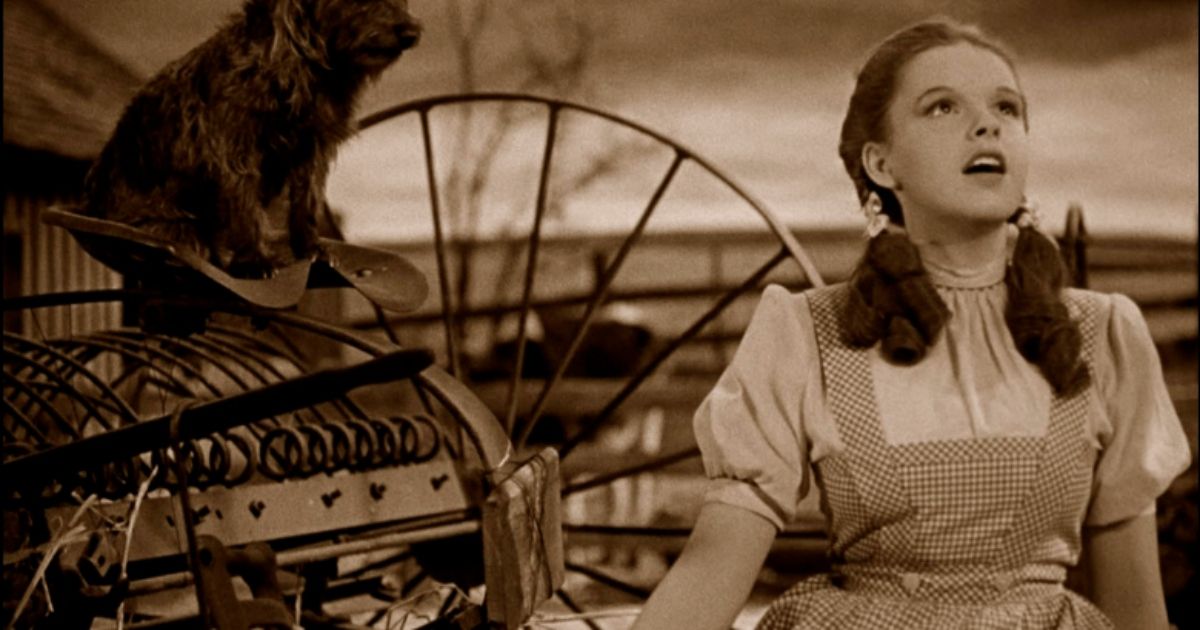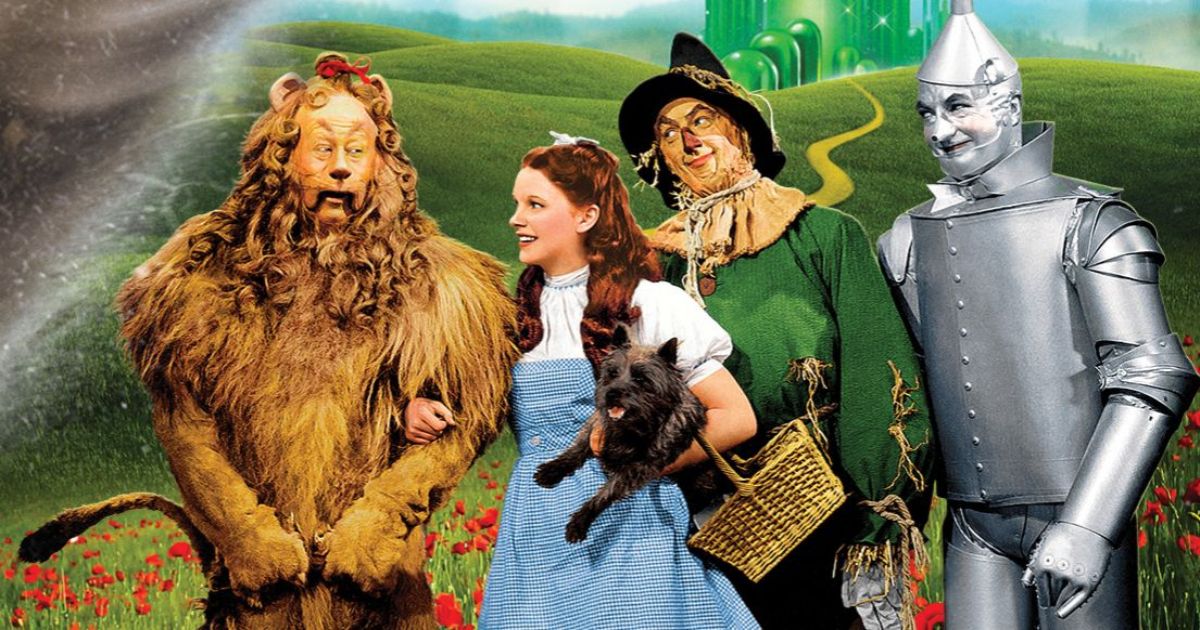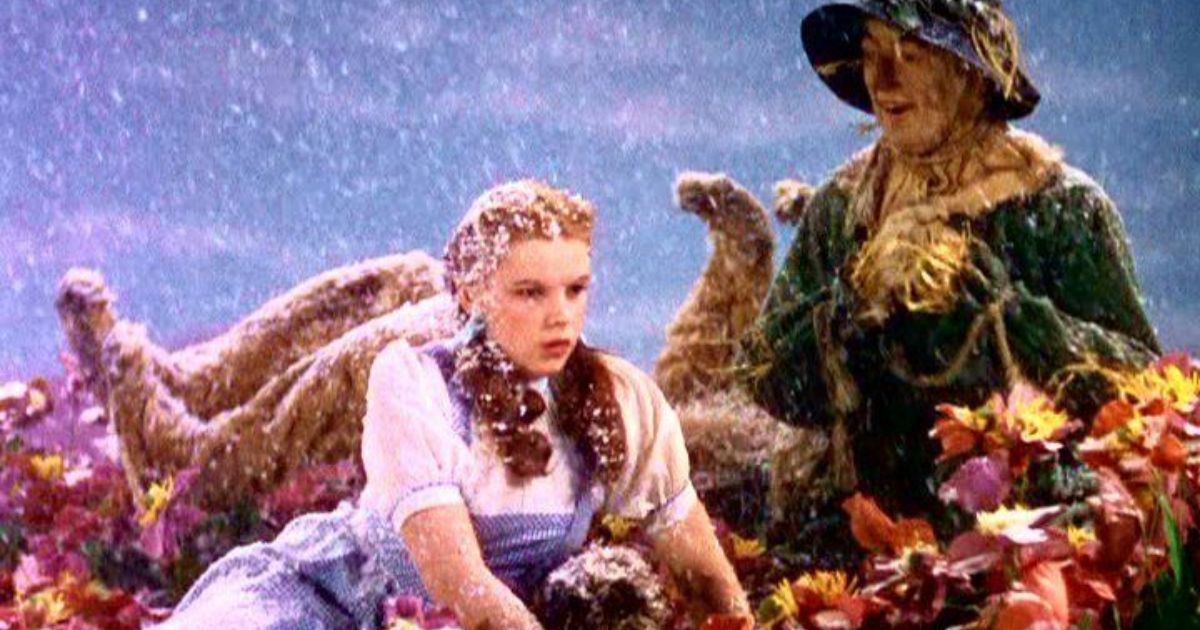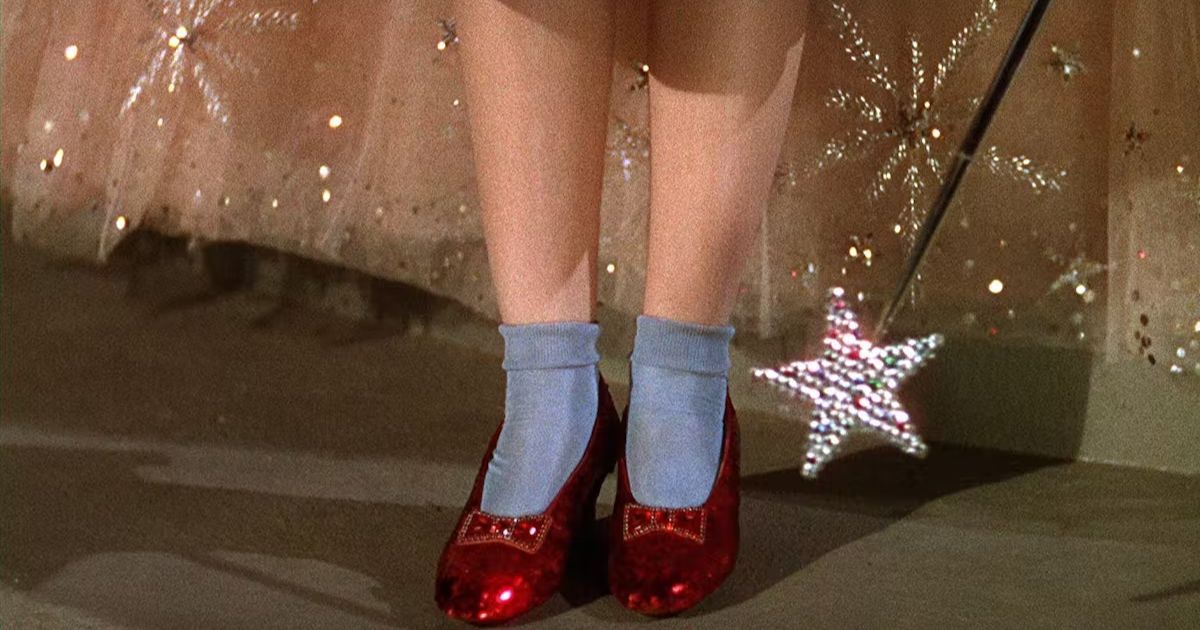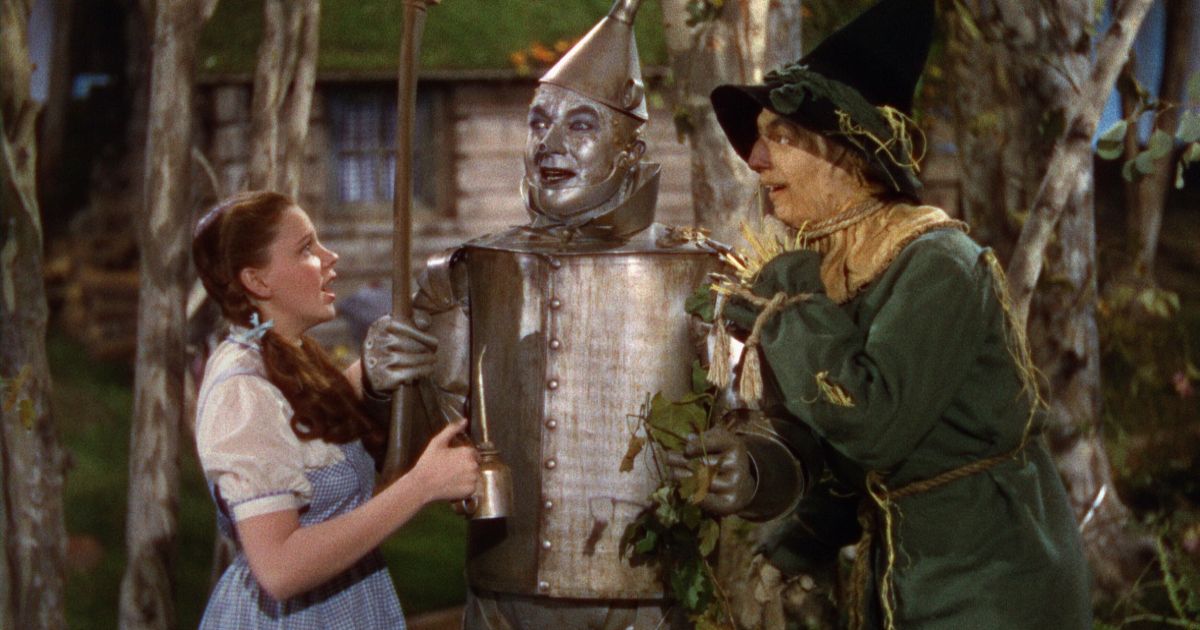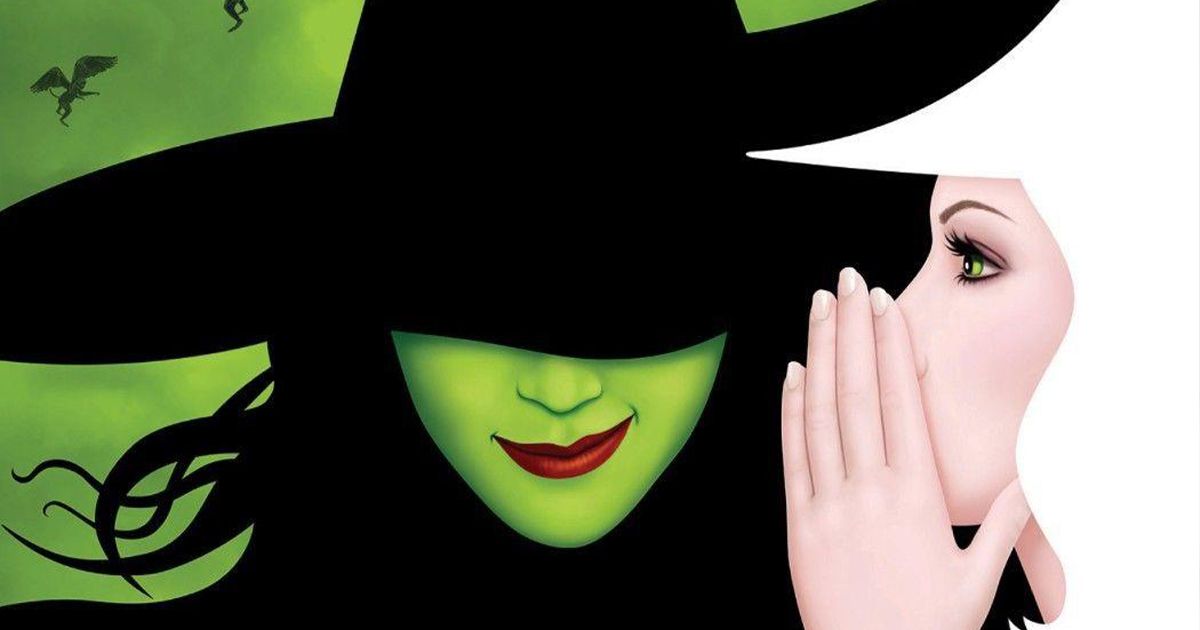The Golden Age of Hollywood has been defined by films that transport the audience into the world of the imagination. From the late 1920s into the early 1940s, American cinema brought a marvelous sense of escapism to theaters. From The Great Depression, the early onset of World War II, and new technological feats, including the introduction of synchronized sound, the motion picture experience boomed. Films like Citizen Kane, Casablanca, and Gone with the Wind have set cinematic gold standards. However, one particular film continues to be celebrated for its technical achievements and maintains its level of heartwarming nostalgia.
The Wizard of Oz, released by Metro Goldwyn Mayer in August 1939, is one of the greatest films of all time. Despite many accounts of a previous “screening,” the official premiere of the film is dated August 12th in Oconomowoc, Wisconsin. The film is based on L. Frank Baum’s children’s novel has been beloved by audiences ever since. With a budget of nearly $3 million, the film saw a worldwide gross return of over $25 million (roughly $500 million in modern spending), though much of that is due to the film’s re-release over a decade later. The film also earned two Academy Awards for its original score and perhaps the most famous song ever included in a movie, “Somewhere Over the Rainbow.”
Updated May 27, 2023: If you’re a fan of The Wizard of Oz, then you’ll be happy to know this article has been updated by Grayson Uckele with additional content.
While the Judy Garland film has been cherished and will continue to inspire motion pictures to this day, the tale of its inception is no colorful image. The story behind the story was hidden away for years, but through biographies and cast interviews, more and more has been uncovered about the so-called “cursed” production. As unfortunate as it is to admit, the 1939 release of the film could have been executed through safer methods had safety percussions been prioritized. From multiple directors to enforced drug use and dangerous stunt work, The Wizard of Oz‘s production crew should thank their lucky stars that none of the actors died on set. Here are some of the craziest things that happened to bring this legendary story to the big screen.
Judy Garland’s Experience on The Wizard of Oz
It is no secret that film icon Judy Garland was exposed to some mistreatment during the making of The Wizard of Oz. Garland was given a salary of just $500 a week for her work on the film, significantly less than her male co-stars. Contrary to urban legend, she was paid more than the dog, Toto… but not by much. The famous canine companion (or rather, his owners) was given a weekly salary of $125, while Garland’s male co-stars were given a salary of $3,000 per week despite hardly anyone knowing their names today. Margaret Hamilton, who played the Wicked Witch of the West, was given a salary of around $1000 per week.
Garland was also exposed to physical and emotional abuse while making the film. Victor Fleming (who was one of many directors on this film) is infamously noted to have slapped young Garland across the face for laughing during takes. Garland’s ex-husband details accounts of inappropriate contact Garland received from the ‘munchkin’ performers (who were men in their 40s), though those actors have been much-maligned over the years. In addition to the physical abuse, Garland was under intense scrutiny for her appearance before, during, and after production. Garland’s drug intake was quite prevalent during this time at the age of 17.
The production company prescribed Garland a regular intake of amphetamines during the day and sleeping pills at night. The upper/downer cycle was so Garland would remain alert and focused during the long hours of filming, but because of the daytime use of amphetamines, sleeping pills were needed at night to get her to sleep. Garland was not the only victim of Hollywood-enforced drug use, other young actors, namely Mickey Rooney, were fed “pep pills” at the time to enhance their performance in front of the camera. It’s important to note that the forced drug use and physical abuse of child star Judy Garland was and still is illegal.
The Music in The Wizard of Oz
The Oscar-winning song “Somewhere Over the Rainbow” was nearly pulled by MGM for being too slow for the film. The song takes the now-standard format of a Broadway “I Want” song that establishes a character’s motivations and desires in a way that touches the audience, thanks to composer Harold Arlen and lyricist E.Y. Harburg. According to their biography by Walter Frisch, the beats of the song have sentimental meaning to the duo:
An Arlen trademark is to begin a song with an octave leap, as in the opening syllables’ ‘Some-WHERE.’ The section ‘Someday I’ll wish upon a star’ was meant to imitate a child’s piano exercise, Arlen claimed. Harburg recalled that it was the way Arlen whistled to call his dog. When Harburg and Arlen were stuck on an ending for the song, Ira Gershwin stepped in to help. When asked why he suggested ending the song with the question, ‘Why, oh, why can’t I,’ Gershwin later recalled, ‘Well, it was getting to be a long evening.’
Another note of music that was famously cut was a jazzy song called “The Jitterbug.” When the four friendly travelers make their way through the cursed forest, they see what the Wicked Witch calls “a little insect” in the final cut. The little insect is the jitterbug, which sends the group into a dance where they can not get the jitters out. The jazz sequence was cut from the film but can still be viewed on YouTube or various biographical websites. Taken out of context, it’s actually a bit disturbing.
Technicolor in The Wizard of Oz
Imagine being an audience member in 1939, seeing what would likely have been an intense scene at the time — Dorothy transitions from a sepia-toned world into a magical, colorful land of make-believe. It was an eye-opening and groundbreaking moment in film history that stands the test of time.
However, what it took to accomplish this sequence was a bit of motion picture sleight of hand… and a hand-painted set. The production designers washed the entire interior of the Gale house in sepia paint, including Bobbie Koshay, a stand-in for Judy Garland, who moved out of frame after the door opened to the colorful ‘Munchkinland.’ Garland entered into the frame and graciously maneuvered through the land for the first time with the audience in a wonderful tracking shot.
Asbestos in The Wizard of Oz
The first sight of the Emerald City is breathtaking and filled with wonderment and inspiration at what’s to come. Dorothy and her three friends find themselves in a field of poppies before making their way to the city gates. However, when the Wicked Witch sees them, she curses the poppies with a sleeping agent. Glinda the Good Witch saves them by making it snow, and the Cowardly Lion notes it is unusual weather.
Why the MCU Has So Many Wizard of Oz References Lately
To create this artificial winter wonderland, the production is pouring pure 100% asbestos falling over the heads and in the faces of the actors. Little did the production know asbestos can do a ton of damage to one’s lungs. But in those days, it was all about what looked the best on film. Asbestos is now avoided as is now, thankfully, avoided. The use of materials that cause long-term health issues runs the risk of a lawsuit, and production companies must halt filming for an actor injured on the job, compensate them, or if a replacement is needed, they must notify the incoming actor of the reason why their predecessor is in need of a replacement which clearly was not the case on The Wizard of Oz.
A film made over 80 years ago is going to have a lesser statute of safety regulations, and much of the make-up and costuming that the actors were exposed to leave them with long-lasting effects. For example, Margaret Hamilton, the Wicked Witch herself, had famous green makeup which contained metallic substances that needed to be fully cleaned off after every shooting day. In addition, Hamilton also suffered serious burns to her hands and face after being lowered through the brick road during her first terrifying sequence in Munchkinland. Her recovery reportedly took three months before she could return to filming.
The famous costume that Bert Lahr had to wear to portray the Cowardly Lion was incredibly heavy, weighing nearly 90 pounds. Parts of real lion pelts were included in the costume to give it a more authentic look, a practice that would not be allowed with today’s animal rights laws. In addition, the costume got so hot for Lahr, already baking under the nearly 100-degree, studio-lit set, that he’d sweat through it. His costume had to be rung out and washed after every day of shooting.
Before Jack Haley wore the silver make-up to play the Tin Man, American actor Buddy Ebsen was originally cast to play the role. However, the original costume design used aluminum-based make-up powder, which caused Ebsen to suffer from a lung infection. He was hospitalized for just after nine days of filming. Ebsen broke down the story in his autobiography:
“It was several days later when my cramps began. My first symptoms had been a noticeable shortness of breath. I would breathe and exhale and then get the panicky feeling I hadn’t breathed at all. Then I would gasp for another quick breath with the same result. My fingers began to cramp, and then my toes. For a time I could control this unusual cramping by forcibly straightening out my fingers and toes.
One night in bed I woke up screaming. My arms were cramping from my fingers upward and curling simultaneously so that I could not use one arm to uncurl the other. My wife tried to pull my arm straight with some success, just as my toes began to curl; then my feet and legs bent backward at the knees. I panicked. What was happening to me? Next came the worst. The cramps in my arms advanced into my chest to the muscles that controlled my breathing. If this continued, I wouldn’t even be able to take a breath. I was sure I was dying.”
Ebsen’s recovery was interrupted by production, who called him to return to set early. Ebsen was unable to return, so production replaced him with Haley, who was never informed of the former Tin-Man’s illness. Although Tin-Man’s powder was exchanged for the aluminum-based paste to avoid inhalation, Haley suffered a serious eye infection because of the makeup.
The Wizard of Oz Hanging is Just a Bird
Many viewers of The Wizard of Oz have noted the possibility that one of the actors who played a munchkin was hanging by the neck during the sequence where Dorothy, Scarecrow, and the Tin Man prance down the Yellow Brick Road. Nevertheless, since the film’s 50th re-release on home video, different versions of this sequence exist, where shadows seem to be more prominent and vibrant than others.
A shadow of what is rumored to be a roaming animal or production hand can be seen on some VHS versions, while the more recent colorizations of this sequence on streaming services such as HBO Max clearly show the vibrant expansion of wings from an exotic bird on set.
Is Safety a Concern on Future Films?
The Wizard of Oz is one of the most popular stories in the world thanks to the 1939 film, and because of that, there have been multiple reimaginings of the classic tale. The two most prominent upcoming ones are Universal Pictures’ two-part adaptation of Wicked, which is based on the musical play of the same name, and the novel Wicked: The Life and Times of the Wicked Witch of the West, which reimagines the story from the perspective of the Wicked Witch of the West point of view. The film will be a musical like the Broadway play and star Cynthia Ervino and Ariana Grande as the Witch of the West and Glinda the Good Witch, respectively.
The second is a more direct remake of the MGM classic. New Line Cinema (a subsidiary of Warner Bros. Discovery which owns the distribution rights to The Wizard of Oz) has set Kenya Barris, the creator of Black-ish and You People, to direct the reimagining of the classic film. There’s not much information out on the project as of yet, but it is known the remake will be a modern retelling – it’s possible the story will be told through a contemporary lens.
The issues The Wizard of Oz actors faced 80 years ago are unlikely to be revisited on the set of the remake due to modern safety rules, and those safety rules are thanks to the various Hollywood Guilds fighting for their rights. The Wizard of Oz remains a timeless classic that will be treasured for generations, but it is important to always remember how difficult it was to make and the serious long-term damage that was caused so as to not repeat these mistakes.
This story originally appeared on Movieweb


